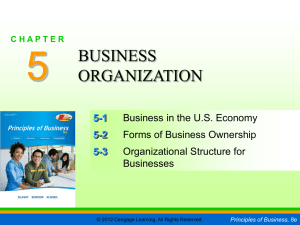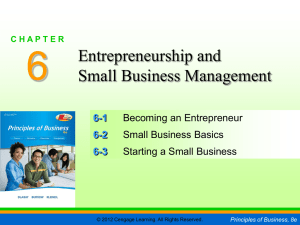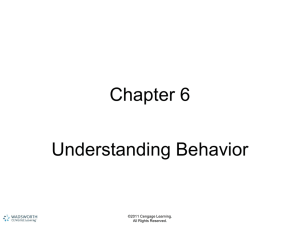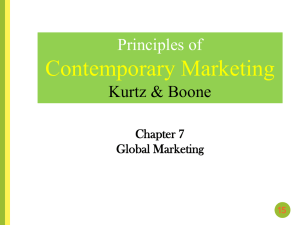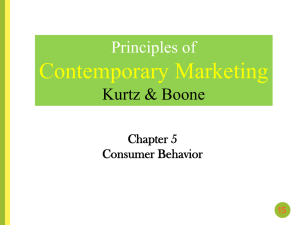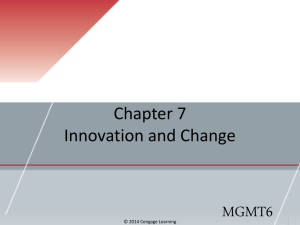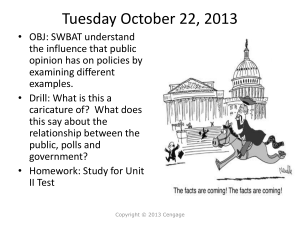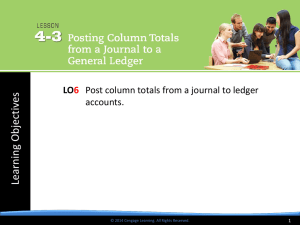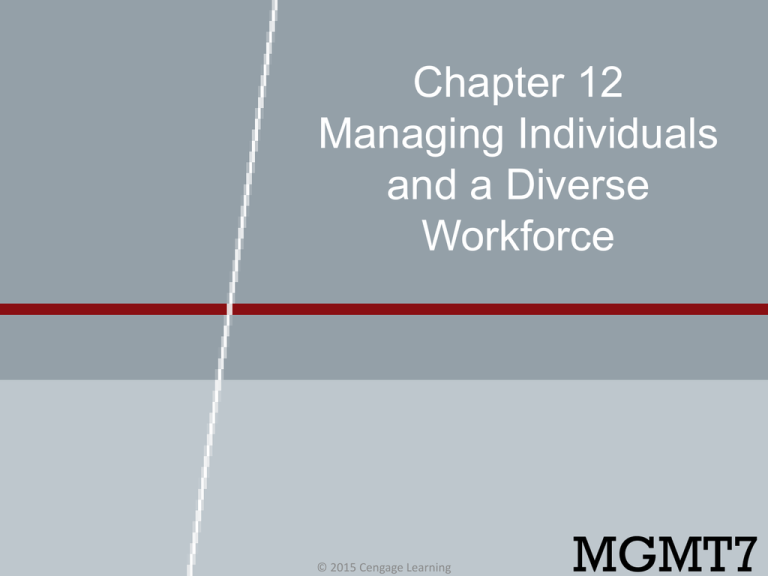
Chapter 12
Managing Individuals
and a Diverse
Workforce
© 2015 Cengage Learning
MGMT7
12-1
12-2
12-3
12-4
describe diversity and explain why it matters
understand the special challenges that the dimensions of
surface-level diversity pose for managers
explain how the dimensions of deep-level diversity affect
individual behavior and interactions in the workplace
explain the basic principles and practices that can be
used to manage diversity
© 2015 Cengage Learning
Diversity Is Not
Affirmative Action
• Diversity exists in an organization when
there are a variety of demographic,
cultural, and personal differences among
the people who work there and the
customers who do business there.
• Affirmative action refers to purposeful
steps taken by an organization to create
employment opportunities for minorities
and women
© 2015 Cengage Learning
12-1
Percent of the Projected Population by Race and
Hispanic Origins for the United States: 2010 to 2050
12-1
Diversity Makes Good
Business Sense
• Decreases turnover
• Decreases absenteeism
• Helps companies avoid expensive
lawsuits
• Helps companies attract and retain
talented workers
• Drives business growth
• Higher-quality problem solving
12-1
© 2015 Cengage Learning
Diversity and Differences
• Surface-level diversity
• Deep-level diversity
• Social integration
© 2015 Cengage Learning
12-2
Age Discrimination
Treating people differently in hiring, firing,
promotions, or compensation because of their
age.
Managers should:
•Recognize that age discrimination is much more pervasive
then they think
•Make hiring and promotion decisions based on qualifications,
not age
•Monitor the extent to which older employees receive training
•Ensure that younger and older workers interact with each
other
12-2
© 2015 Cengage Learning
Sex Discrimination
When people are treated differently
because of their sex.
Managers should:
•Mentoring
•Make sure that male-dominated social
activities don’t unintentionally exclude women
•Designate a go-to person that women can talk
to if they believe they are being held back
12-2
© 2015 Cengage Learning
Women at Fortune 500 and 1000 Companies
12-2
Racial or Ethnic Discrimination
When people are treated differently
because of their race or ethnicity.
Managers should:
•Start by looking at the numbers (hiring rates,
promotion rates)
•Survey employees’ level of satisfaction
•Eliminate unclear selection and promotion criteria
•Train those who make hiring and personnel decisions
12-2
© 2015 Cengage Learning
Disability Discrimination
When people are treated differently
because of their disabilities.
Managers should:
•Education
•Workplace accommodations
•Actively work to find jobs for qualified people with
disabilities
© 2015 Cengage Learning
12-2
Deep-Level Diversity
• Disposition
• Personality
© 2015 Cengage Learning
12-3
The Big Five Personality Dimensions
• Extraversion
• Emotional stability
• Agreeableness
• Conscientiousness
• Openness to experience
12-3
© 2015 Cengage Learning
Diversity Paradigms
• Discrimination and fairness paradigm
• Access and legitimacy paradigm
• Learning and effectiveness paradigm
– organizational plurality
12-4
© 2015 Cengage Learning
The Learning and
Effectiveness Paradigm
• Values common ground
• Makes a distinction between individual
and group differences
• Less likely to lead to conflict, backlash,
divisiveness
• Focuses on bringing different talents
and perspectives together
12-4
© 2015 Cengage Learning
Diversity Principles
•
•
•
•
•
•
Carefully and faithfully follow and enforce federal
and state laws regarding equal opportunity
employment.
Treat group differences as important but not
special.
Find common ground.
Tailor opportunities to individuals, not groups.
Solicit negative as well as positive feedback.
Set high but realistic goals.
© 2015 Cengage Learning
12-4
Diversity Training and Practices
• Awareness training
• Skill-based diversity training
• Diversity audits
• Diversity pairing
• Minority experiences
© 2015 Cengage Learning
12-4
Mitchell Gold + Bob
Williams
<click screenshot for video>
1. What are advantages
and disadvantages of
diversity at Mitchell
Gold and Bob Williams?
2. How does MG + BW’s
approach to diversity
reflect the learning and
effectiveness paradigm?
3. How might a
commitment to diversity
at MG+BW help
managers with
globalization?
© 2015 Cengage Learning


